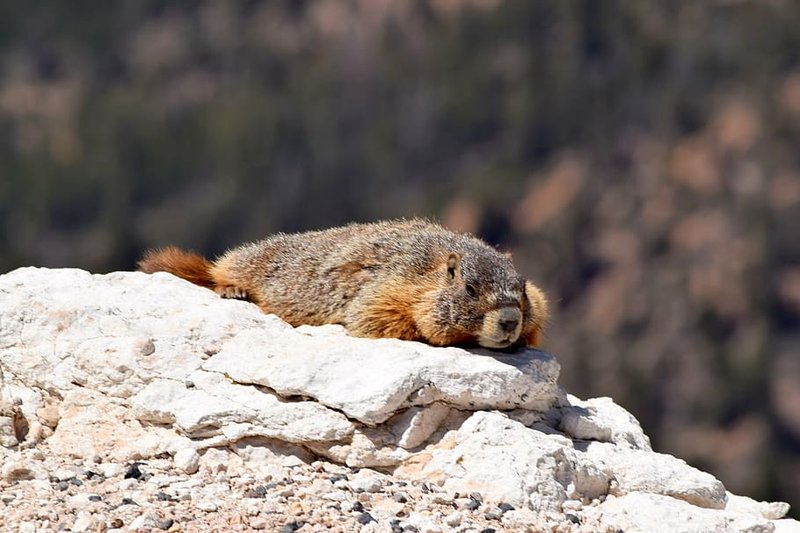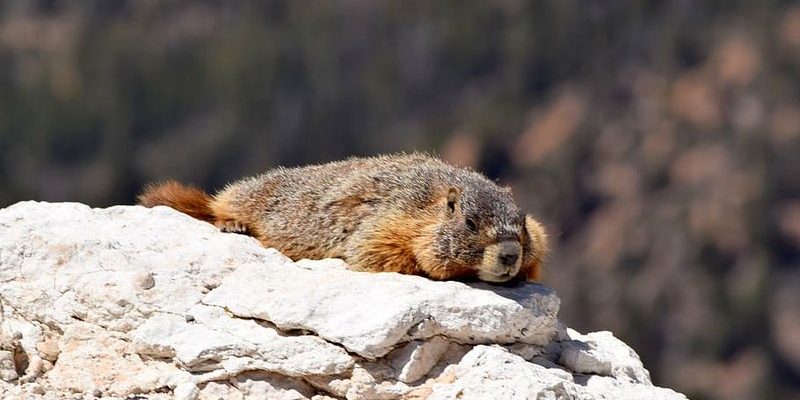
Marmots are part of the squirrel family and live in mountainous areas of North America, Europe, and Asia. They thrive in higher elevations, often in rocky or grassy landscapes where they can dig elaborate burrows to create a safe haven for their families. These burrows, like a well-fortified castle, protect them from predators and harsh weather. So, how exactly do these fascinating creatures tackle the journey of parenthood? Hang tight, and let’s dig deeper!
Understanding Marmot Family Structure
Marmots are social animals, living in groups called colonies. Think of it as a big family reunion, where everyone has a role to play. Each colony usually consists of several adults—both males and females—along with their offspring. The social dynamics of a marmot colony can be quite complex, but here’s the deal: strong family bonds are essential for the survival of young marmots.
Marmots typically breed once a year, usually in late winter to early spring. After a gestation period of about 30 days, a female marmot gives birth to a litter of about three to five pups. These little ones are born blind and hairless, relying completely on their mother for warmth and nourishment. The entire colony pitches in to help raise the young, which boosts their chances of survival. It’s like a cooperative daycare where everyone looks out for each other.
Roles of Adult Marmots
In a marmot colony, both male and female adults play vital roles in caring for the young. The mother marmot provides direct care, nursing the pups and keeping them warm. However, the male, or the dominant male, also contributes by standing guard and ensuring the safety of the colony. It’s not uncommon to see them switch roles, with other adult females in the colony helping out as well.
When the pups start to venture out of the burrow, they’re closely monitored by the adults. If a predator approaches, an adult will let out a series of alarm calls to warn the others, keeping everyone on high alert. It’s a real team effort, proving that it takes a village—or in this case, a colony— to raise young marmots.
Caring for Young Marmots
Once the pups are about four weeks old, they begin emerging from the safety of the burrow. This is a crucial time for their development, as they start exploring their surroundings and learning from the older marmots. You might be wondering how they avoid accidents while frolicking around. Well, the adults are right there to guide them, teaching essential skills like foraging for food and recognizing potential dangers.
During this exploration phase, the pups also engage in playful behaviors. Picture them chasing each other around a grassy meadow or practicing their climbing skills on nearby rocks. This playful interaction is not just fun; it’s a crucial part of their development. Through play, they learn social skills and build the coordination they’ll need as adults.
Feeding Their Pups
Marmots are herbivores, which means they feed their pups a plant-based diet. The mother will nurse her young until they are about six weeks old, transitioning them to solid foods soon after. They typically consume a variety of plants, grasses, and herbs available in their environment. The adults will often bring back small bites of food to share with the pups, reinforcing the idea of sharing within the colony.
It’s fascinating to note that young marmots quickly pick up on what to eat by observing their parents. They watch closely as adults forage, learning which plants are safe and which aren’t. This natural learning process is vital for their survival—after all, knowing what food to eat can make the difference between thriving and merely surviving.
Behavioral Development in Marmots
As the pups grow, their personalities really start to shine. Marmots are known for their curious and playful nature, making them quite entertaining to watch. Throughout the summer months, which is the prime time for growth and development, the pups interact with each other and the adults in many ways.
During this period, you’ll often see them wrestling or play-fighting with their siblings. This behavior is more than just play; it’s a way for them to develop crucial life skills. By practicing dominance and submission through play, they learn their place within the colony and how to interact socially with other marmots.
You might even see some of the older pups helping their younger siblings, which is a lovely example of how communal care extends beyond just the adults. This nurturing behavior reinforces bonds within the colony, ensuring that everyone contributes to raising the next generation.
Preparing for Independence
By late summer, the young marmots are nearing independence. They become increasingly skilled in foraging and navigating their habitat. As fall approaches, the adults start to prepare the pups for life on their own, gradually reducing their involvement in feeding and protection. This transition is important; it helps the young marmots learn to rely on themselves.
Interestingly, some pups may choose to stay within the colony for a season or two after reaching maturity, while others will venture out to establish new colonies. This flexibility helps maintain genetic diversity, as some young marmots will eventually relocate to different areas, ensuring the survival of their species.
Challenges Faced by Young Marmots
Despite the support of their colony, young marmots face several challenges when growing up in the wild. Predation is a constant threat, with animals like foxes, eagles, and coyotes always lurking nearby. If the pups venture too far from the burrow while their parents are away, they could become easy targets.
Additionally, environmental factors can pose threats. Harsh weather conditions, like early snow or severe storms, can disrupt their food supply and make it difficult for them to survive. Marmots are well-adapted to their environments, but sometimes the odds are stacked against them.
To combat these challenges, marmots rely heavily on their social structure. The alarm calls from adults alert everyone in the colony to danger, while their burrowing system provides refuge from predators and inclement weather.
Conservation and Habitat Protection
Unfortunately, habitat loss and climate change are significant threats to marmot populations. Ensuring these fluffy creatures have a safe environment is crucial for their survival. Conservation efforts focus on protecting their natural habitats and educating people about the importance of these animals.
By preserving the ecosystems where marmots thrive, we not only support their populations but also contribute to the overall health of their environments. It’s a win-win situation! If you ever get the chance to visit mountainous regions where marmots live, remember that your presence can impact their habitats. Respecting nature is key to maintaining a balance that allows these adorable critters to thrive.
Raising young marmots is truly a remarkable process that showcases the beauty of nature’s social systems. With strong family bonds, cooperative care, and playful learning, these animals exemplify the essence of teamwork in the wild. Watching how marmots nurture their young and prepare them for independence is a reminder of the incredible adaptability of wildlife.
Next time you find yourself in a mountainous area, keep an eye out for these charming critters. Whether you’re mindful of their habitat or just enjoying the sight of them playing in the meadows, appreciating how marmots raise their young adds another layer to our understanding of the natural world. So, grab a pair of binoculars, and who knows? You might just witness a family of marmots in action!

